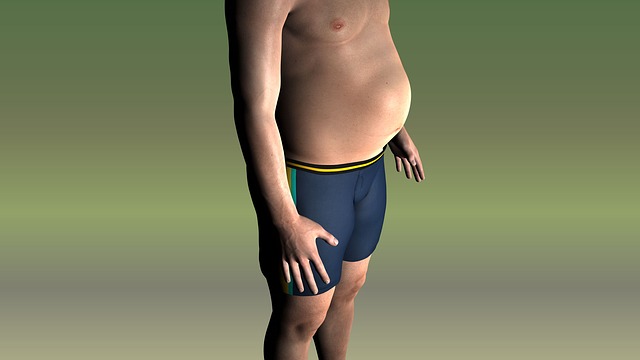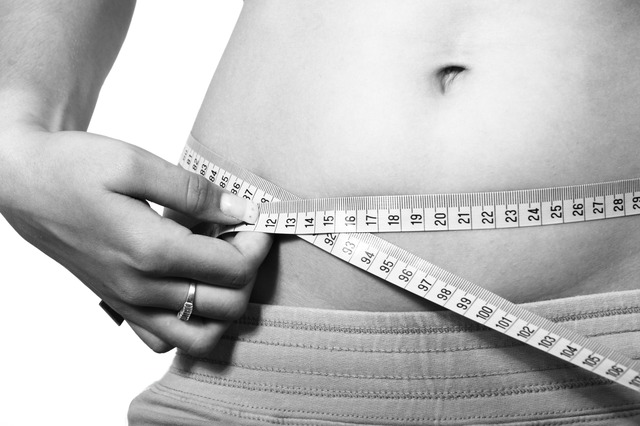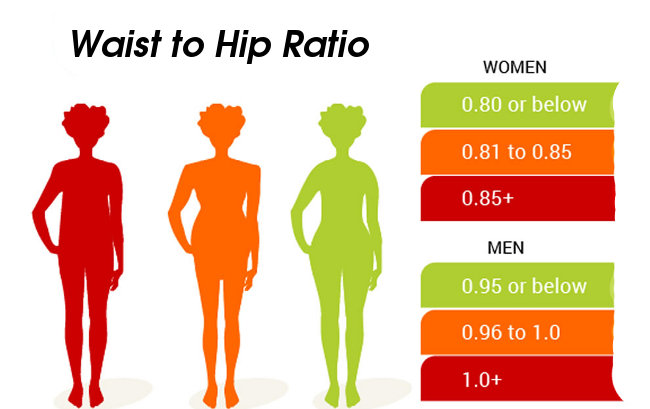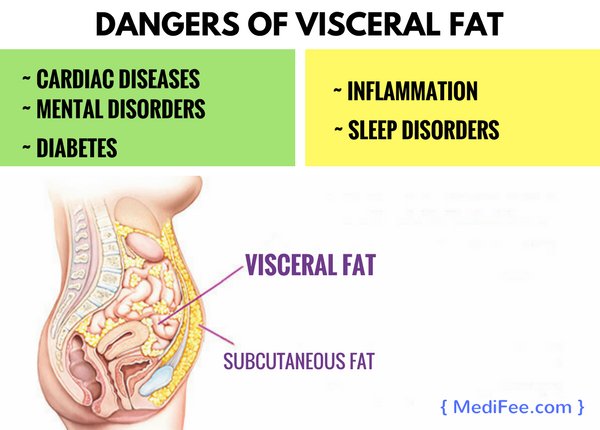What do you see when you look into a full-length mirror? A chiseled and well-maintained body without a single love handle or a body with too many curves? Good for you if you answered with the first point. But really bad news, if it is the second point that was your answer! Yes, you guessed it right. We will be talking about FAT here, especially visceral fat.
 It is everyone’s pipe dream these days to have a flat stomach and enviable washboard abs just like those models gracing glossy magazine covers. However, sadly, this pipe-dream does not reach fruition beyond a couple of weeks after the dust has settled on the new year. Most people then resign to the fact that they would never be able to vanish the ugly fat deposits they have in different regions on their body. As a result they choose to not leave the comforts of their bed every morning. Also eating anything and everything without thinking of its consequences!
It is everyone’s pipe dream these days to have a flat stomach and enviable washboard abs just like those models gracing glossy magazine covers. However, sadly, this pipe-dream does not reach fruition beyond a couple of weeks after the dust has settled on the new year. Most people then resign to the fact that they would never be able to vanish the ugly fat deposits they have in different regions on their body. As a result they choose to not leave the comforts of their bed every morning. Also eating anything and everything without thinking of its consequences!
Thus extra pounds get parked on the body in areas like the mid-riff and thighs, becoming an invitation for diseases, about which you can read later in this article. These pounds not only make your overall appearance uglier but also make you hunt for plus-size clothes while shopping. How disheartening it is, if the cute pink top you see on a shopping trip doesn’t fit you, because you are 2 sizes bigger!
What is visceral fat?
The word fat has acquired negative connotations in this age of fad-diets and weight loss. Some amount of fat is an absolute must for proper functioning of the body and the metabolism process. Not only that, fats are essential in absorption of vitamins for the body, maintaining luster of skin and hair, acting as shock absorbers for bone when you fall and many other jobs.
What then is visceral fat? It is the accumulation of adipose tissue in a deep layer inside the abdominal cavity. It can be easily confused for the subcutaneous fat that can be seen on arms and thighs. Difference being, subcutaneous fat is easy to lose as it is on the outer layer of the skin. Whereas visceral fat resides deep inside the abdominal cavity and hence harder to lose and also to see. 
The catch is that, this visceral fat bears proximity to vital organs like kidney, liver and pancreas, thus giving rise to terrible health disorders. Arterial blockages are also likely to get developed due to metabolization of visceral fat by liver. Bad cholesterol is thus formed, clogging arteries from inside.
As mentioned above, visceral fat can easily pass off for subcutaneous fat. It can be present in individuals who are not fat. Or in other words, those people who are on the slimmer side of the weighing scale. However, this fat is present in more or less every individual to some extent, even if they are thin.
So, how does visceral fat develop?
The hormone insulin works on maintaining a fine balance by keeping blood sugar levels in check after one has consumed anything high on sugar. This hormone is also known for its function of dispensing energy to the whole body for its functioning. The insulin hormone also has to distribute blood sugar in cells throughout the body. During digestion, the nutrients you eat through food get converted into glucose and fructose. When the blood in our body has high levels of glucose already, the additional glucose content getting introduced gets converted into fat. As a result, fat gets stored when you eat high sugar or high carbohydrate food. It shows up on your body, also increasing your urge to eat because of higher insulin release from pancreas. This is how you get deposits of visceral fat when you mindlessly binge on foods like burgers, pastries, wafers, cakes, muffins, noodles, pasta and bakery products that contain processed starch. 
Development of visceral fat is also attributed to one’s genes and hereditary factors. However, sedentary lifestyles of people these days that consist of less or next to no exercise, are also responsible for the same.
Visceral fat is also a common phenomenon in teenagers these days who are more active on social media rather than the playground. Add to it is the increasing consumption of junk food and zero physical activity, that gives you the perfect recipe for visceral fat.
In women who have crossed age of menopause, the reduced production of sex hormones – testosterone and estrogen, coupled with poor physical activity is said to cause visceral fat.
How is visceral fat measured?
How many times have you heard people boasting about having high metabolism rates or being unable to lose weight because of a poor metabolism? Many times, perhaps. Let us break down the concept of metabolism and its linkage with visceral fat.
Metabolism is the process by which body creates energy for different bodily functions. In layman’s language, metabolism can be explained as “The body’s ability to breakdown complex substances and absorb nutrients.” Losing fats from waist, thighs, arms and legs is a herculean task for people who aren’t blessed with a good metabolism. People with a good metabolism or good metabolic rate lose weight easily as a result of their body’s absorption rate. Whereas, people having slower metabolism find it really hard to lose weight. 
So, to have an aim of losing a particular amount of weight, you need to be aware of the visceral fat and fat percentage you store in your body.
Following are the ways to measure visceral fat:
- Waist to Hip Ratio: A waist to hip ratio (WHR) is obtained by dividing circumference of waist and hip. For deriving it, you would require measuring tape. First up, you measure the region just above your belly button. Then comes measuring the buttocks region. Divide both of these figures and the resulting number is your WHR. This measure helps you in knowing deposition of fat you have in buttocks, hips and waist. You can use this method yourself from time to time to track the progress of your weight.
- CT Scan: The patient is made to slide inside a CT scanner that is a machine resembling a tunnel. X-ray images are generated from different angles. In this context, CT scan of abdomen is more appropriate. Abdominal tissues, pancreas, liver and surrounding organs are scanned for greater clarity and understanding of fat deposition. In the same vein, an MRI can also be easily used by the doctor to decipher your body fat percentage. Procedure of MRI is quite similar to that of a CT scan. An abdominal MRI scan enables the doctor to see the internal structures inside the abdominal cavity with ease. Thus visceral fat can be estimated.
- Ultrasound: In an ultrasound of the abdomen, a hand-held device somewhat similar to a microphone is used for generating images of the stomach, to help the doctor view them on a computer. High frequency sound-waves are emitted through the hand-held device as opposed to radiation used in MRI or CT scan. This makes ultrasound a safer alternative for measuring body fat percentage.
- Bioelectrical Impedence Analysis: This is a technological invention fitted in portable devices that shows the relation between body composition and body mass. An electric current is passed in the body through electrodes placed on right arm and right foot. This method studies the resistance of body tissues to the electric current. Body fat is calculated on basis of movement of this current throughout the body.
- DEXA Scan: Dual energy X-ray absorptiometry (DEXA) is an accurate and effective method of calculating the body fat percentage. This scan measures visceral and subcutaneous fat. A DEXA scan takes into consideration your height, fat tissue percentage, bone mineral mass, body mass and tissue percentage in muscles. That gives you a precise picture of the body fat you possess.
Problems due to visceral fat
Visceral fat is an extremely disastrous disorder for the body. It can multiply health issues in people having visceral fat. It afflicts the person with serious life-threatening illnesses, bringing down the general quality of his/her life.  Few of the health issues are as mentioned below:
Few of the health issues are as mentioned below:
- Cardiac diseases – Women with greater visceral fat are at a higher risk of clogged arteries and blockages. Visceral fat as mentioned before can increase your cholesterol, thus opening the doors for hypertension and heart disease.
- Diabetes – Belly fat also leads to an increase in Low Density Lipoprotein (LDL) cholesterol and a drop in High Density Lipoprotein (HDL) cholesterol, making the body unable to respond to insulin produced in the blood. This causes Type 2 diabetes.
- Inflammation – Belly fat produces a hormone called cytokine which in turn gives birth to inflammation. This leads to blood clots and the person contracting stroke in the long run.
- Sleep disorders – A variety of sleep disorders can come knocking the door in people who have visceral fat – obstructive sleep apnea is one. People who are obese, develop blockages in their airways in throat, obstructing their breathing. This results in a disturbed sleep.
- Mental disorders – Depression is the main mental disorder that is associated with men and women having visceral fat. Alzheimer’s is another very serious disease that can happen to people who do not do anything about getting rid of their visceral fat.
Apart from these mentioned health issues, visceral fat is also linked to dangerous diseases like breast cancer and colorectal cancer.
So, if you are reading this and have been ridden with visceral fat on your body, wake up. Start following an exercise regimen, a healthy diet and proper sleep. The exercise regimen should consist of a proper mix of cardio and strength training. That alone will help you get rid of your love handles; not soon but in few months.
good topic . fat deposition anywhere in body is harmful anyhow . keep up good topics.
thanks
Nice post